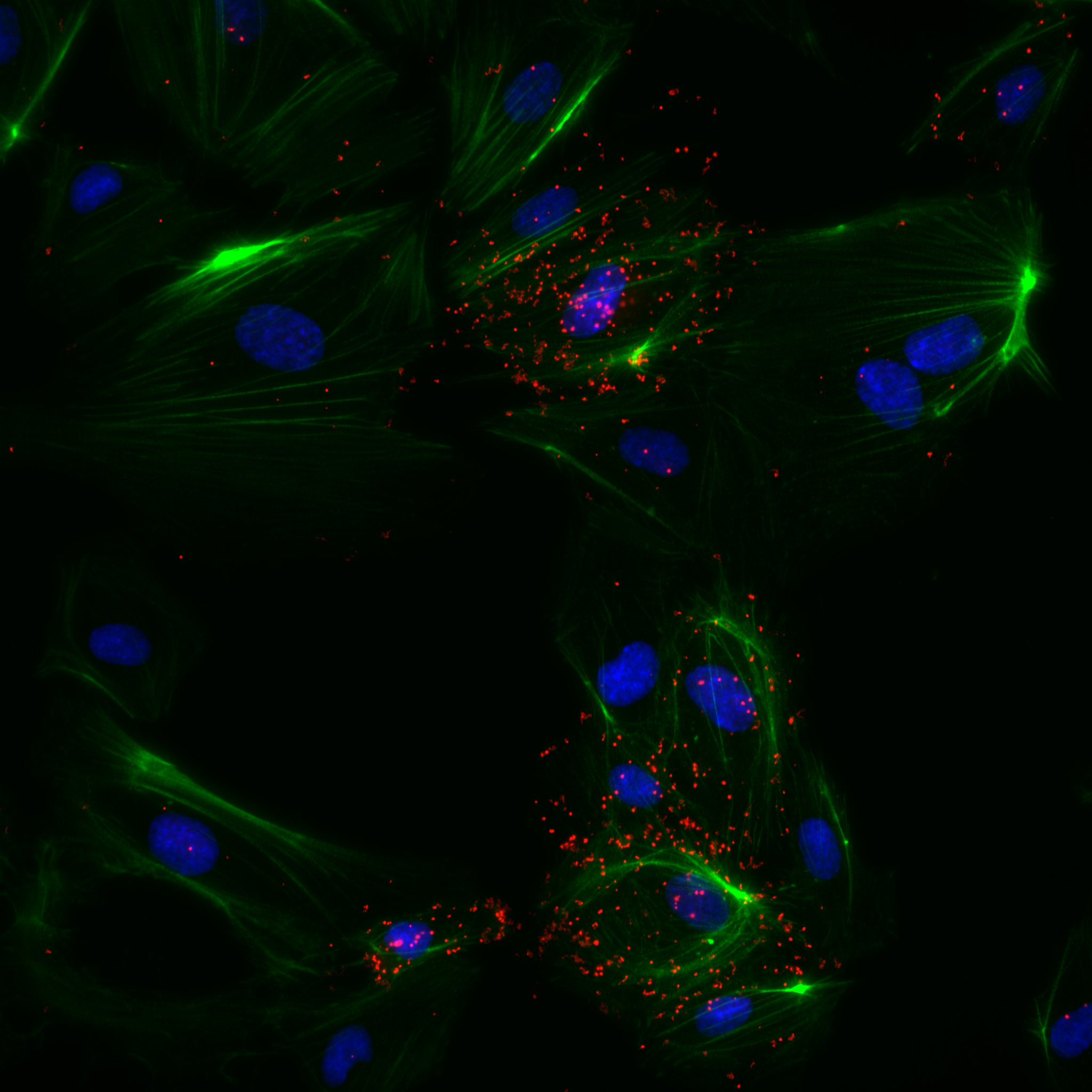Description
The Naveni pY VEFGR2 is an in situ proximity ligation assay kit for fluorescence detection of phosphorylated VEGFR2. Contrary to traditional immunofluorescence, the kit gives a high signal-to-noise ratio and is easily quantifiable. The kits can be used for cultured cells, fresh-frozen-, and FFPE cell samples.For research use only. Not for use in diagnostic procedures. The kit is based on our Naveni® Proximity Ligation Technology, with two Navenibodies conjugated to proprietary oligo arms. The technology ensures specific and sensitive detection.
The Navenibodies in the Naveni pY VEGFR2 kits target two epitopes on the phosphorylated VEGFR2. One Navenibody targets the protein close to the cytoplasmic C-terminal, and the other Navenibody interacts with phosphorylated tyrosine residues. Probes in close proximity will give a strong and distinct signal, creating a specific and sensitive detection method for phosphorylated VEGFR2. The kit is optimized for cell samples, and everything is included.
Product code: NPT.VEGFR2
Included in the kit:
- Navenibody targeting cytoplasmic human VEGFR2 protein
- Navenibody targeting phosphorylated tyrosine residues
- Detection fluorophore TEX615
- Buffers for blocking and dilutions, and all detection reagents
- The Navenibody solution has a working volume of 4000µl (sufficient for approx. 100 reactions)
User instructions
Detect phosphorylated VEGFR2 – to elucidate tumor angiogenesis
VEGFR2 (VEGF receptor 2) is a receptor for VEGF (vascular endothelial growth factor) and an essential protein in the vasculogenesis and angiogenesis signaling pathway. Elevated VEGF within the tumor microenvironment has shown to be an indicator of poor patient prognosis in malignant cancers. VEGF stimulates cellular responses by binding to tyrosine kinase on VEGFR2, leading to phosphorylation and activation. Quantifying phosphorylated VEGFR2 is important to understanding the VEGF signaling pathway.
Naveni PTM
Posttranslational modification (PTM), such as tyrosine phosphorylation (pTyr, pY) of proteins, is essential for several cellular functions and pathophysiological processes. The Naveni PTM product line includes kits for detecting tyrosine phosphorylation of RTKs. Western blot has traditionally been used to study phosphorylation of proteins, but specific tools for quantifying phosphorylation of RTKs in situ have been requested for a long time. The Naveni PTM kits now make it possible to detect and quantify low-abundant phosphorylated RTKs in situ with single-cell resolution.
Keywords: Proximity Ligation Assay, Phosphorylation, phosphorylated proteins, posttranslational modification (PTM), in situ, receptor tyrosine kinases (RTKs), fluorescence, western blot, validated antibodies
